Kit History
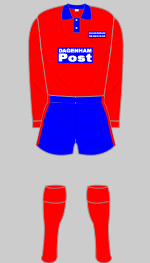
1992-1994 e k l m
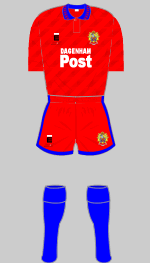
1994-1996 f m
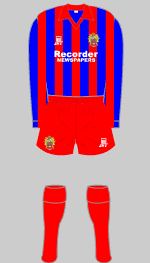
1996-1997 d
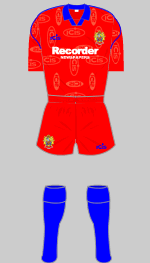
1997-1998 1 m
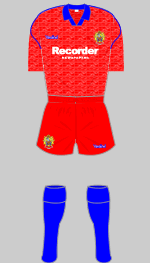
1997-1998 2 m

1998-1999 j
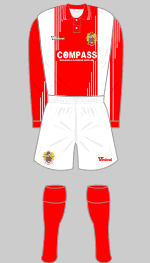
1999-2001 a d h
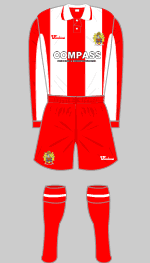
2001-2003 a
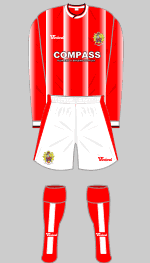
2003-2005 a
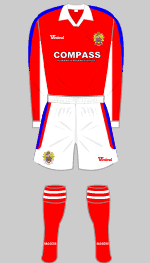
2005-2006 a

2006-2007 a
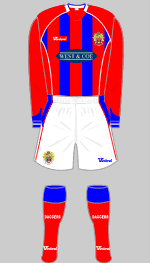
2007-2009 b
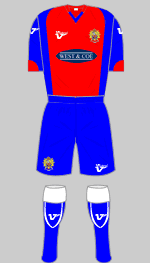
2009-2011 g
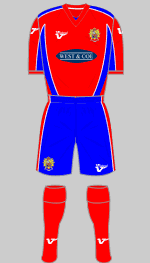
2011-2013 i
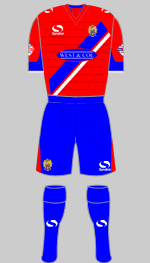
2013-2015 i
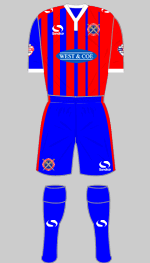
2015-2017 i
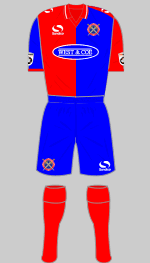
2017-2019 i
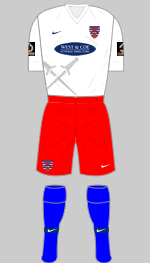
2019-2020 i
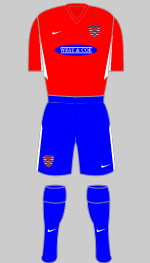
2020-2022 i
Background
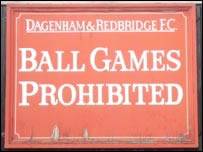 The modern “Daggers” have a rather complicated history, involving mergers of some of the most famous names in the amateur game. The oldest of these was Ilford (formed 1881) but the better known was Leytonstone, formed in 1886, they were three times winners of the FA Amateur Cup and nine times champions of the Isthmian League. In 1979 these two clubs merged to form Leytonstone/Ilford. Then in 1988, they absorbed the struggling Walthamstow Avenue to become Redbridge Forest, who were promoted to the Football Alliance in 1991.
The modern “Daggers” have a rather complicated history, involving mergers of some of the most famous names in the amateur game. The oldest of these was Ilford (formed 1881) but the better known was Leytonstone, formed in 1886, they were three times winners of the FA Amateur Cup and nine times champions of the Isthmian League. In 1979 these two clubs merged to form Leytonstone/Ilford. Then in 1988, they absorbed the struggling Walthamstow Avenue to become Redbridge Forest, who were promoted to the Football Alliance in 1991.
Dagenham were formed in 1949 and also competed in the amateur Isthmian League until 1981 when they were promoted to the Football Alliance. In 1988 they were relegated back to the Isthmian League.
 In 1992, the two clubs merged to form Dagenham & Redbridge and continued to compete in the Alliance until 1996 when they were relegated and for the next four seasons they competed once more in the Isthmian League. The red and blue colours were chosen to represent those of the two merged teams. The club played at Victoria Road, previous home of Dagenham. Their first badge consisted simply of the new name in white on a blue rectangle.
In 1992, the two clubs merged to form Dagenham & Redbridge and continued to compete in the Alliance until 1996 when they were relegated and for the next four seasons they competed once more in the Isthmian League. The red and blue colours were chosen to represent those of the two merged teams. The club played at Victoria Road, previous home of Dagenham. Their first badge consisted simply of the new name in white on a blue rectangle.
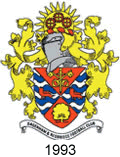 (For an excellent concise history of the various clubs that became Dagenham & Redbridge consult Diggerdagger.com.)
(For an excellent concise history of the various clubs that became Dagenham & Redbridge consult Diggerdagger.com.)
In 1993 a formal crest was introduced based on the arms of the Municipal Borough of Dagenham but modified to include the oak tree from the arms of Redbridge.
Returning to what was now the Football Conference in 2000, they were narrowly beaten to the the title by Boston United in 2002. The Lincolnshire club was subsequently found to have made improper payments to their players and were docked points for the following season in the Football League. Despite attempts by Dagenham & Redbridge to have themselves declared Conference champions, Boston kept their title and promotion.
The club's crest, worn since its formation, includes the central shield surmounted by a helm taken from the Dagenham coat of arms.
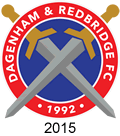 The Daggers qualified for the play-offs in 2003 but then struggled until 2006-07, when they overhauled Oxford United to clinch the title in April 2007 and promotion to the Football League.
The Daggers qualified for the play-offs in 2003 but then struggled until 2006-07, when they overhauled Oxford United to clinch the title in April 2007 and promotion to the Football League.
In July 2014 the club announced a competition to design a new crest to be adopted for 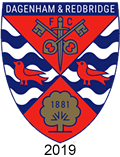 the 2015-16 season. The winning entry took inspiration from the team's nickname. Sadly the season did not end well and they lost their place in the Football League after finishing in 23rd place.
the 2015-16 season. The winning entry took inspiration from the team's nickname. Sadly the season did not end well and they lost their place in the Football League after finishing in 23rd place.
Following a financial crisis the club was taken over by a consortium of seven American sports entrepeneurs who stabilised the finances and set their sights on a return to the Football League. The new regime launched a new crest in April 2019, a simplified version of the 1993 coat-of-arms badge. The date, 1881, printed on the oak tree refers to the formation of Ilford FC, the oldest of the predecessor clubs that went to form the modern club. The strip introduced by the new owners did not go down well with supporters and in response the club announced it would enter into discussions with Nike with a view to introducing something more traditional for 2020-21.
Sources
- (a) Diggerdagger.com
- (b) Luton Town Official Website
- (c) Mark Holland provided information about kit suppliers 2000-2008
- (d) Ralph Pomeroy
- (e) Mark Holland
- (f) Peter Hurn (Pete's Picture Palace)
- (g) Southend United Official Website
- (h) Keith Ellis (HFK Research Associate)
- (i) Dagenham & Redbridge FC official website
- (j) Classic Football Shirts
- (k) Chris Bramley
- (l) YouTube
- (m) Jakob de Freitas
Crests are the property of Dagenham & Redbridge FC.
